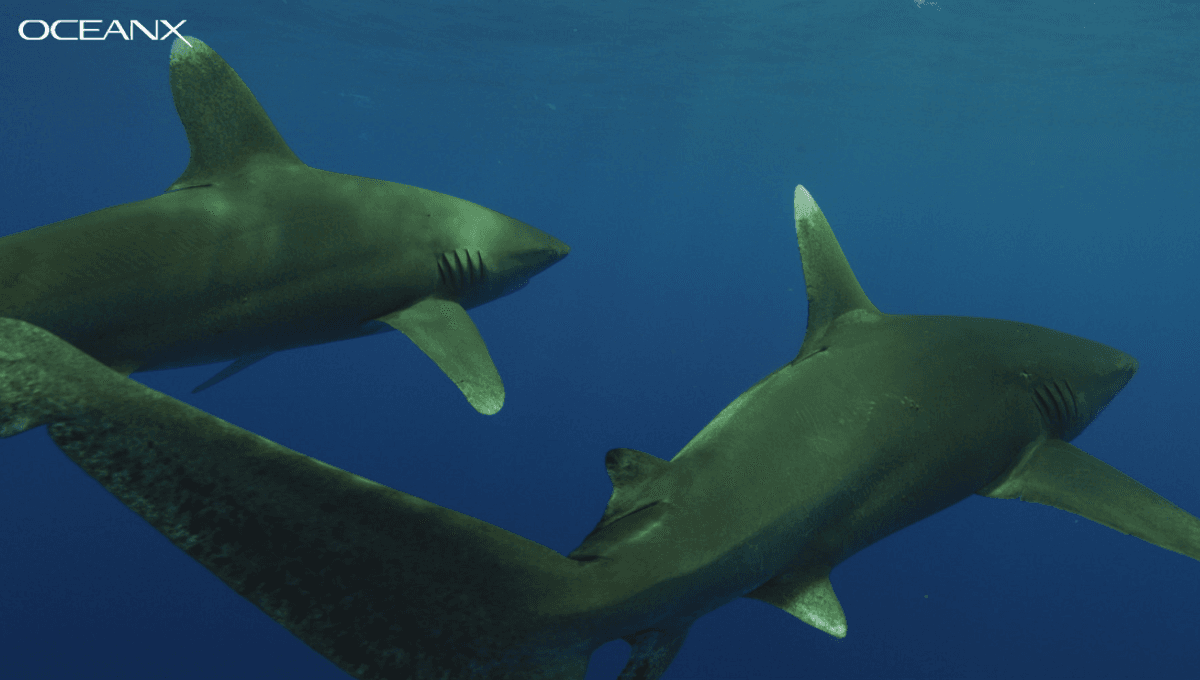
A tender moment between two whitetip sharks has been filmed off Cat Island in the Bahamas, marking the first time their mating ritual behaviors have been caught on camera. As a critically endangered species, insights like this are invaluable into the species’ ecology and to improving our understanding of how to conserve them in the wild.
Oceanic whitetip sharks (Carcharhinus longimanus) are large predatory sharks with mottled white markings on the tips of their fins, hence the name. Sitting at the top end of the food chain, they hunt for marine mammals, sea birds, other sharks and large sportfish like tuna and marlin.
Despite being such effective predators, they are under extreme threat from human activity. Their leading threat is bycatch from commercial fisheries, but they are also targeted for their meat that’s a firm favorite in shark fin soup.
These threats have pushed them to a critically endangered status in the wild, but an observation inside a government-protected area off Cat Island in the Bahamas has shone new light on their lives that could help us to better protect the species.
“A once common species in the Atlantic Ocean, the oceanic whitetip shark has experienced dramatic global population declines due to overfishing,” said project leader Dr Brendan Talwar from the Cape Eleuthera Institute in a release sent to IFLScience. “One of its remaining strongholds is off of southern Cat Island, in the eastern Bahamas, where these sharks aggregate in at least April and May of each year.”
“After years of studying this aggregation, our team was fortunate to encounter two sharks engaged in courtship behaviors in July of 2019 while aboard OceanX‘s ship, the Alucia. In order to recover the species, protecting critical habitats such as these potential reproductive areas is of vital importance.”
Whitetips are pelagic sharks, meaning they live out in the open sea. Typically they’re found offshore where the water’s deep, spending most of their time near the surface. They’re long-living sharks (between 25 and 35 years) that reach sexual maturity at around 9 years of age.
Part of the reason the species is vulnerable relates to their slow reproductive rates, as their reproductive cycle only occurs every other year and they have a long gestation period of up to a year. That means a shark has to evade threats for a long time before she can hope to have pups of her own.
Godspeed, you frisky Chondrichthyes.
The study is published in Endangered Species Research.
Source Link: Mesmerizing Mating Ritual Of Whitetip Sharks Caught On Camera For The First Time